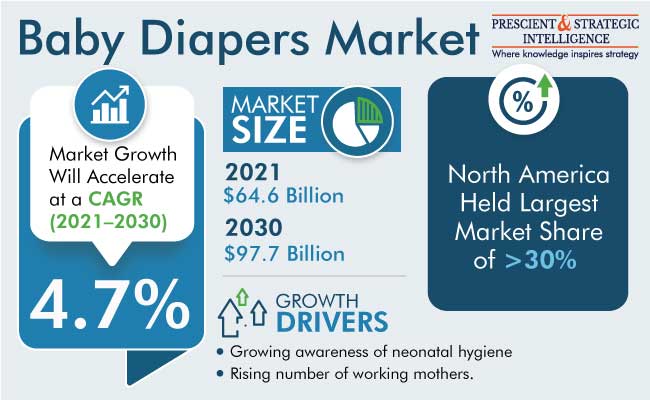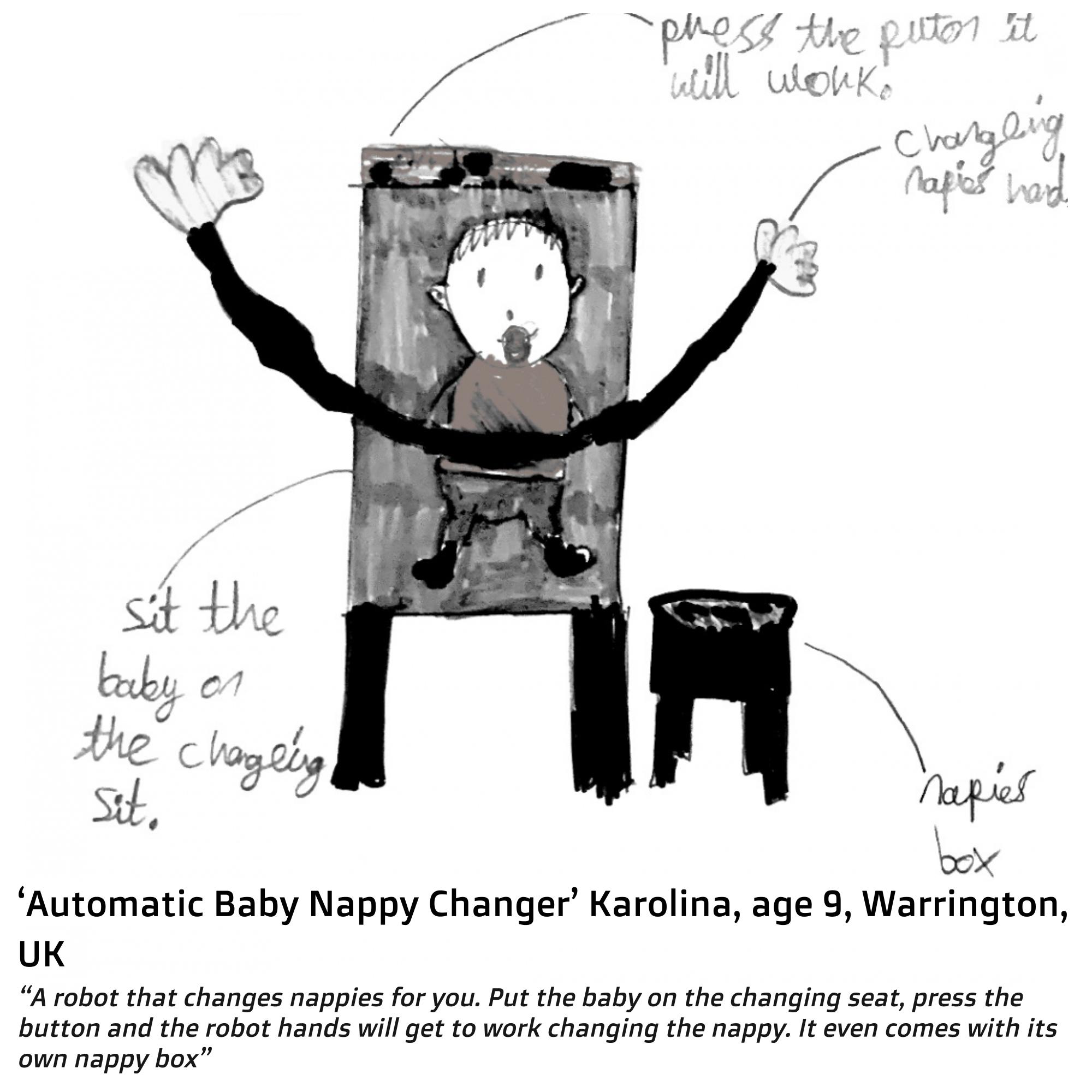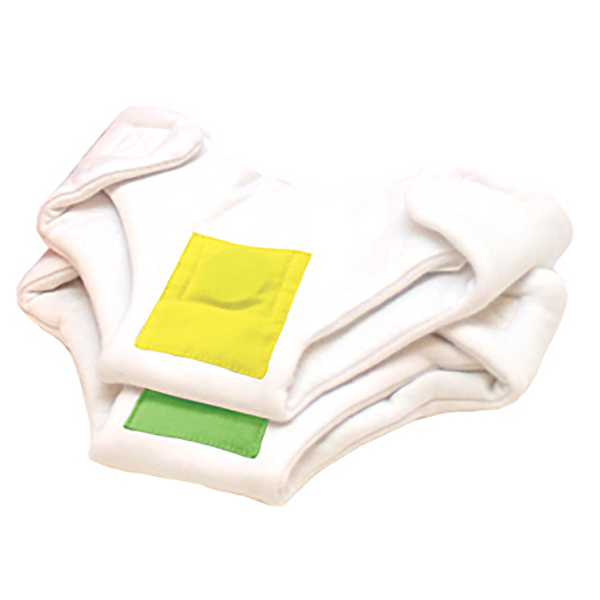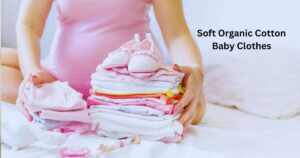Baby nappies work by absorbing and locking away moisture to keep the baby dry and comfortable. They use superabsorbent polymers and layers to manage wetness.
Baby nappies are essential for keeping infants clean and dry. They consist of several layers, each designed for a specific purpose. The top layer stays soft against the baby’s skin, while the inner layers absorb and trap moisture. Superabsorbent polymers in the core swell and lock away liquid, preventing leaks.
Elastic leg cuffs and waistbands provide a snug fit, reducing the risk of spills. This design ensures that babies stay comfortable and rash-free. Parents can choose from disposable or cloth nappies, depending on their preference and lifestyle. Proper use of nappies helps maintain hygiene and promotes a baby’s overall well-being.

Credit: www.psmarketresearch.com
Introduction To Baby Nappies
Baby nappies are a vital part of baby care. They keep your baby dry and comfortable. Understanding how nappies work can help you make the best choice.
Why Nappies Are Essential
Nappies are essential for several reasons:
- They keep your baby clean and dry.
- They prevent rashes and skin irritations.
- They help you manage waste efficiently.
Types Of Baby Nappies
There are different types of baby nappies. Each has its own benefits.
| Type | Description |
|---|---|
| Cloth Nappies | Reusable and eco-friendly. Requires washing after use. |
| Disposable Nappies | Convenient and easy to use. Discard after one use. |
| Biodegradable Nappies | Environmentally friendly. Breaks down faster than regular disposables. |

Credit: www.realityworks.com
Anatomy Of A Baby Nappy
A baby nappy is a marvel of engineering. Each part has a unique role. Together, they keep your baby dry and comfortable. Let’s explore the different components.
Outer Layer
The outer layer is the first line of defense. It is waterproof to prevent leaks. This layer also keeps clothes dry. Typically, it is made from polyethylene or a similar material.
Absorbent Core
The absorbent core is the heart of the nappy. It is designed to soak up liquid quickly. This core contains superabsorbent polymers (SAP). These polymers can hold many times their weight in liquid. The core often includes fluff pulp to help with absorption.
Inner Layer
The inner layer sits closest to the baby’s skin. It is soft and gentle. This layer wicks moisture away from the skin. It helps to keep the baby dry and comfortable. The material is often a soft polypropylene.
Fastening System
The fastening system ensures a snug fit. It includes tabs and elastic bands. Tabs are usually adjustable for a secure fit. Elastic bands around the legs prevent leaks. Some nappies have a wetness indicator. This feature helps parents know when to change the nappy.
| Component | Material | Function |
|---|---|---|
| Outer Layer | Polyethylene | Waterproof barrier |
| Absorbent Core | SAP and Fluff Pulp | Absorbs and retains liquid |
| Inner Layer | Polypropylene | Wicks moisture away |
| Fastening System | Tabs and Elastic Bands | Ensures snug fit |
Absorption Mechanism
Understanding how a baby nappy works is fascinating. The key element is the absorption mechanism. This mechanism keeps your baby dry and comfortable.
Super Absorbent Polymers
Super Absorbent Polymers (SAPs) are crucial in baby nappies. These polymers absorb liquids quickly. They can hold many times their weight in liquid.
SAPs turn liquid into a gel. This gel traps moisture inside. It prevents leaks and keeps the baby’s skin dry.
Fluid Distribution
Fluid distribution is another vital part. Once absorbed, the liquid spreads evenly. This distribution prevents pooling in one area.
Modern nappies have channels. These channels help in spreading the fluid. This ensures the baby feels dry and comfortable.
Leak Prevention
Leak prevention is essential for nappies. Elastic barriers around the legs help in this. They create a snug fit to stop leaks.
Some nappies have double leak guards. These guards offer extra protection. They ensure the liquid stays inside the nappy.
Choosing The Right Nappy
Choosing the right nappy for your baby is crucial for comfort and hygiene. Parents need to consider several factors to make the best choice. This section will explore the key considerations: size and fit, material choices, and the pros and cons of disposable vs. cloth nappies.
Size And Fit
Babies grow quickly, so selecting the correct nappy size is essential. Nappies are available in different sizes based on your baby’s weight.
| Size | Weight Range |
|---|---|
| Newborn | Up to 10 lbs |
| Size 1 | 8-14 lbs |
| Size 2 | 12-18 lbs |
| Size 3 | 16-28 lbs |
| Size 4 | 22-37 lbs |
Ensure the nappy fits snugly around the waist and legs. A good fit prevents leaks and keeps your baby comfortable. Always check the manufacturer’s size guide for accuracy.
Material Considerations
The material of the nappy is another critical factor. Some babies have sensitive skin and need hypoallergenic materials.
- Cotton: Soft and breathable, ideal for sensitive skin.
- Bamboo: Natural and eco-friendly, offers good absorption.
- Synthetic: Often more absorbent but may cause irritation.
Check the nappy’s inner lining. It should wick moisture away from the skin. This helps prevent rashes and keeps your baby dry.
Disposable Vs. Cloth
Parents often debate between disposable and cloth nappies. Each type has its pros and cons.
- Disposable Nappies:
- Convenient and easy to use.
- Highly absorbent, keeping the baby dry.
- More waste, not eco-friendly.
- Cloth Nappies:
- Reusable, reducing waste.
- Cost-effective over time.
- More laundry and maintenance.
Consider your lifestyle and budget when choosing between disposable and cloth. Many parents use a mix of both for convenience and sustainability.
How To Change A Nappy
Changing a nappy can be a quick and easy task. Knowing the right steps helps you keep your baby clean and comfortable. Here’s a simple guide to help you through the process.
Preparation Steps
Before you start, gather all the necessary items. This ensures a smooth and hassle-free nappy change.
- Clean nappy
- Baby wipes
- Changing mat
- Diaper rash cream (if needed)
- Plastic bag for disposal
Place your baby on a safe, flat surface. Make sure the changing mat is clean and ready. Keep all items within reach.
Step-by-step Changing Process
- Lay your baby on the changing mat.
- Unfasten the dirty nappy and lift your baby’s legs.
- Use baby wipes to clean the diaper area.
- Let the area dry for a few moments.
- Apply diaper rash cream, if necessary.
- Place the clean nappy under your baby.
- Fasten the nappy snugly but not too tight.
- Ensure the nappy fits well around the legs and waist.
Disposal Tips
Proper disposal of the used nappy is crucial for hygiene.
- Roll up the dirty nappy and fasten it with the tabs.
- Place the rolled-up nappy in a plastic bag.
- Tie the bag securely to contain any odors.
- Dispose of the bag in a designated bin.
Always wash your hands thoroughly after changing a nappy. This prevents the spread of germs.

Credit: www.littleinventors.org
Common Nappy Issues
Babies wear nappies daily, so common nappy issues can arise. Parents often face a few problems, including nappy rash, leaks, and odor control. Understanding these issues helps in better nappy management.
Nappy Rash
Nappy rash is a common issue for babies. It can cause discomfort and irritation.
- Occurs due to prolonged moisture exposure.
- Can be caused by friction from the nappy.
- Sometimes, it results from a yeast infection.
Prevention tips:
- Change nappies frequently.
- Use a barrier cream.
- Allow some diaper-free time.
Leaks And Blowouts
Leaks and blowouts are messy and frustrating for parents.
| Cause | Solution |
|---|---|
| Improper nappy fit | Ensure the nappy fits snugly. |
| Overfilled nappy | Change nappies more often. |
| Wrong nappy size | Switch to the correct size. |
Odor Control
Managing odor is essential for both comfort and hygiene.
- Dispose of soiled nappies promptly.
- Use odor-neutralizing nappy bins.
- Wash cloth nappies with odor-fighting detergent.
Regular cleaning of nappy changing areas can also help control odor.
Nappy Maintenance
Understanding how to maintain baby nappies is essential for every parent. Proper nappy maintenance ensures your baby stays comfortable and healthy. Here are some key areas to focus on:
Storage Solutions
Effective storage solutions are crucial for nappy maintenance. Keep clean and dirty nappies separate. Use a dedicated nappy bin for soiled nappies. Ensure it has a tight-fitting lid to contain odors.
Store clean nappies in a dry, cool place. Use a drawer or a dedicated shelf. This keeps them accessible and organized.
| Storage Type | Function |
|---|---|
| Nappy Bin | Holds soiled nappies, prevents odor |
| Drawer/Shelf | Stores clean nappies, keeps them organized |
Cleaning And Sterilization
Proper cleaning and sterilization are vital for nappy maintenance. Rinse soiled nappies immediately to remove waste. Use a dedicated bucket for soaking.
- Rinse nappies to remove waste.
- Soak in a bucket with water and mild detergent.
- Wash in a washing machine at 60°C.
- Dry nappies in sunlight to kill bacteria.
Always check the nappy manufacturer’s instructions. This ensures you use the right cleaning methods.
Eco-friendly Practices
Adopt eco-friendly practices to maintain nappies sustainably. Use cloth nappies instead of disposables. This reduces waste and saves money.
- Wash nappies in full loads to save water and energy.
- Use eco-friendly detergents that are gentle on the skin.
- Dry nappies on a clothesline instead of using a dryer.
Implementing these practices helps protect the environment. It also keeps your baby safe and comfortable.
Expert Tips For New Parents
Becoming a new parent is exciting and challenging. Understanding how baby nappies work can help make the journey smoother. Here are some expert tips to help you navigate the world of nappies with ease.
Nappying On The Go
When you’re out and about, having a well-stocked nappy bag is essential. Include these items for a stress-free experience:
- Extra nappies
- Baby wipes
- Changing mat
- Hand sanitizer
- Extra clothes for the baby
Ensure your nappy bag is always ready to go. This saves time and keeps your baby comfortable.
Budget-friendly Nappying
Raising a baby can be expensive. Here are some tips to keep nappying budget-friendly:
- Buy in bulk: Bulk purchases can save money.
- Use cloth nappies: Reusable and cost-effective.
- Look for sales: Keep an eye on discounts and offers.
- Try different brands: Sometimes, cheaper brands work just as well.
Saving on nappies means you can spend more on other baby essentials.
When To Consult A Pediatrician
Sometimes, nappy issues need expert advice. Consult a pediatrician if you notice:
- Persistent diaper rash
- Unusual odors
- Prolonged discomfort or crying
- Allergic reactions
Your baby’s health is important. Always seek professional help when needed.
Frequently Asked Questions
What Is A Baby Nappy?
A baby nappy, or diaper, is an absorbent garment worn by infants. It collects urine and feces, keeping the baby dry.
How Does A Baby Nappy Work?
A baby nappy uses absorbent materials to trap moisture. It has an outer layer to prevent leaks and inner layers to absorb liquid.
When Should You Change A Baby Nappy?
Change a baby nappy every 2-3 hours or immediately after it becomes soiled. This prevents diaper rash.
What Are The Types Of Baby Nappies?
There are two main types: disposable and cloth nappies. Disposable nappies are convenient, while cloth nappies are eco-friendly.
Conclusion
Understanding how baby nappies work is essential for parents. They ensure comfort, hygiene, and convenience for babies and caregivers. By choosing the right nappy, you can prevent leaks and skin irritation. Always consider your baby’s needs and lifestyle when selecting nappies.
Happy parenting!




